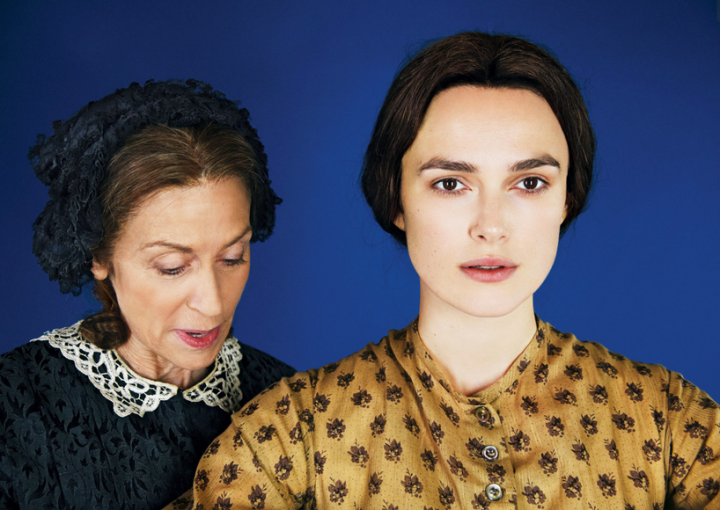 Photo Credit: Erik Madigan Heck
Photo Credit: Erik Madigan Heck
The Roundabout Theater Company’s adaptation of Émile Zola’s 1867 novella, Thérèse Raquin, is an intense melodrama that requires no use of foreshadowing to hint the tragedy that lies in store for its characters. The audience is welcomed with ominous non-diegetic music creating the sense of a gripping ill-feeling from the start, which oddly enough never seems to go away. Throughout the play, the audience wrestles with a wide range of emotions towards their multi-faceted protagonist played by Keira Knightly in her Broadway debut. The audience is also assaulted with powerful feelings of Thérèse’s confinement through the use of mute colour tones and stage setting.
We are first introduced to Thérèse Raquin in silhouette, obligingly following her aunt (Judith Light) across the stage to meet her invalid cousin Camille (Gabriel Ebert). She is, it seems, unremarkable and unmistakingly lowly as she acquiesces soon after to dutifully marry her cousin without any apparent objection. Her inner turmoil is reserved for the audience to witness. When the news of their arranged wedding is broken to her, Thérèse bolts downstage and releases her private despair under spotlight, isolated and seemingly helpless. Her insignificance is only made more well-aware to us by the production’s almost arid stage design, at one point only consisting of three large multi-pane windows, visually engulfing Thérèse as she opens each one. In contrast, but with similar effect, is the narrow living area of the apartment the family inhabits when they move to Paris and the artist loft dwelling of Laurent (Matt Ryan), Thérèse’s lover. These tight spaces allow functionality, yet they are really what real-estate agents would normally describe as “cosy”. The last few scenes limit Thérèse within the spaces of the Parisian apartment that contributes to the crescendo of intensity leading to the epic denouement.
Apart from the drama, the stage technology utilised in this production deserves mention. Stage manager, Jeffrey Rodriguez’s work was certainly cut out for him, with the stage consisting of the suspending artist’s loft at one point, making clear the attic element in Laurent’s abode in Paris. With some slightly racy things happening during this scene, it is a testament to the crew that no evidence of swinging was apparent, as this could have threatened the audience’s lapse in concentration. Water of some depth was also featured in the play to depict the body of water Thérèse would confide in- a character almost in itself. The water would subsequently be a friend that would also keep her terrible secret as well.
By the end of Thérèse Raquin, we’re left to determine the limitations of our sympathy for our protagonist. The timid and obliging Thérèse eventually turns into a very capable young woman.
4 out of 5 stars
-Esther Gavino
